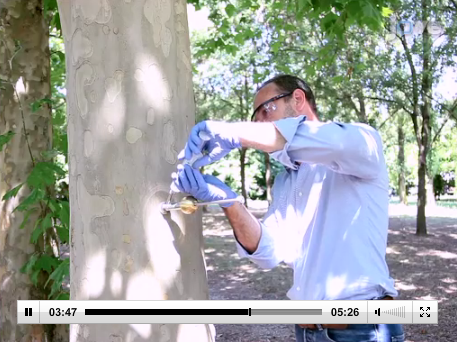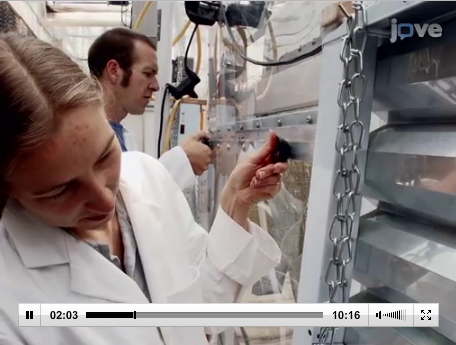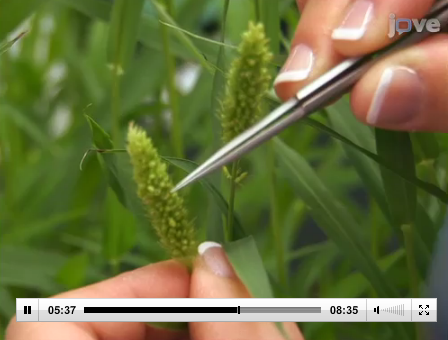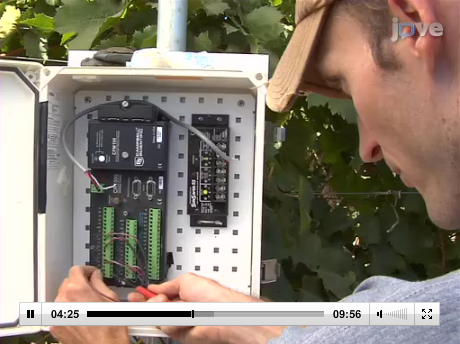In this weeks Editor’s Picks collection, associate editor of JoVE’s Environment section, Elizabeth Sheeley, tells us how she developed her passion for environmental science and highlights four of her favorite videos from her section.
Why study environmental science? For Sheeley, it all began with a denitrification research project she did during her undergraduate studies on Plum Islands in eastern Massachusetts—a large ecological study site where scientists research the effects of nutrient loading.

Sheeley: Essentially they dump nutrients into the soil there and see how the ecosystem reacts. They see if the soil crumbles, if holes in the marshland develop, and what happens as a result of introducing change to an ecosystem. We worry about factories dumping waste products, but even clean waste can be a problem because it’s not natural. So for example, algae grows and uses up the oxygen in water; If there’s too little oxygen, and the algae over grows, the lake, or body of water goes through a process called eurtrophication – which essentially causes the death of its inhabitants. When changing an ecosystem, we don’t know what the outcome is going to be. I like working in the environmental science field, because we don’t always know what’s going to happen in our experiments.
Pick #1 — A Venturi Effect Can Help Cure Our Trees

Sheeley: This article introduces a new, friendlier approach to an environmental technique scientists have been doing for years. The authors have developed a method to inject solutions, like pesticides, into trees to help them grow better. However they do it in a way that is less damaging than the traditional approach. I worked with this author during the publishing process here at JoVE. He’s very excited about his research, which is something I love to see.
Pick #2 — Design and Operation of a Continuous 13C and 15N Labeling Chamber for Uniform or Differential, Metabolic and Structural, Plant Isotope Labeling

Sheeley: In this video article, the authors introduce a plant-growing chamber for continuously labeling plants from the time that they are planted to their harvest. They do this by pumping isotopes, carbon-13 and nitrogen-15, into the chamber. The plants absorb the isotopes as though they were normal compounds, but because they are not, the scientists can differentiate them. They can track the isotopes, and for example, study how different species of plants use carbon and nitrogen from the atmosphere versus that from the soil.
Pick #3 — Methods for Performing Crosses in Setaria viridis, a New Model System for the Grasses

Sheeley: The purpose of this video is to standardize this method and new model organism across the environmental field. The authors demonstrate a controlled, efficient and easy method to grow this new grass, and they explain how and why to study it. Setaria viridis is much like the organisms you see in the Science Education Model Organisms section, because it makes for an ideal model system. It has a rapid generation time, it’s small, there are not to many growth requirements. The seeds grow well, it’s stable and it’s excellent for plant genetic studies.
Pick #4 — Surface Renewal: An Advanced Micrometeorological Method for Measuring and Processing Field-Scale Energy Flux Density Data

Sheeley: Here is a system for studying how crops use water, evaporation and how weather effects growth. More than that, it’s a measuring system setup that can be used to give you information on a lot of different things in a crop like if plants need more water. I like this video article because one day a system like this could be used to help ordinary people like farmers to grow their crops. What’s so great about it is that it gives you the data you or a farmer would need in real time—and not later.

